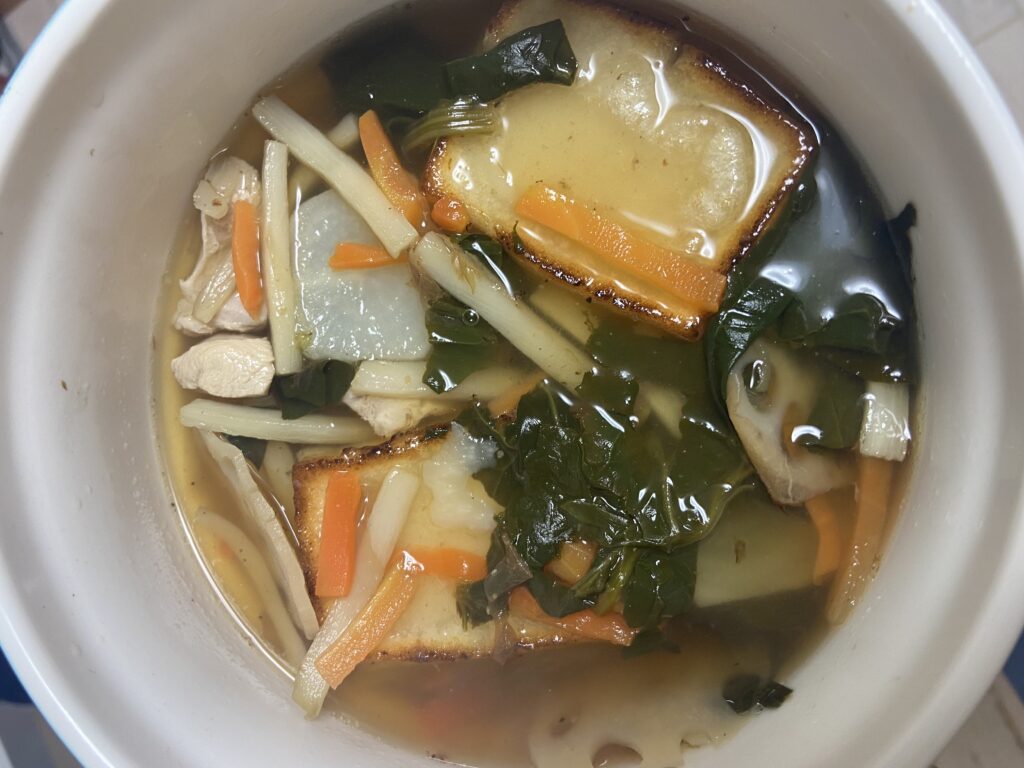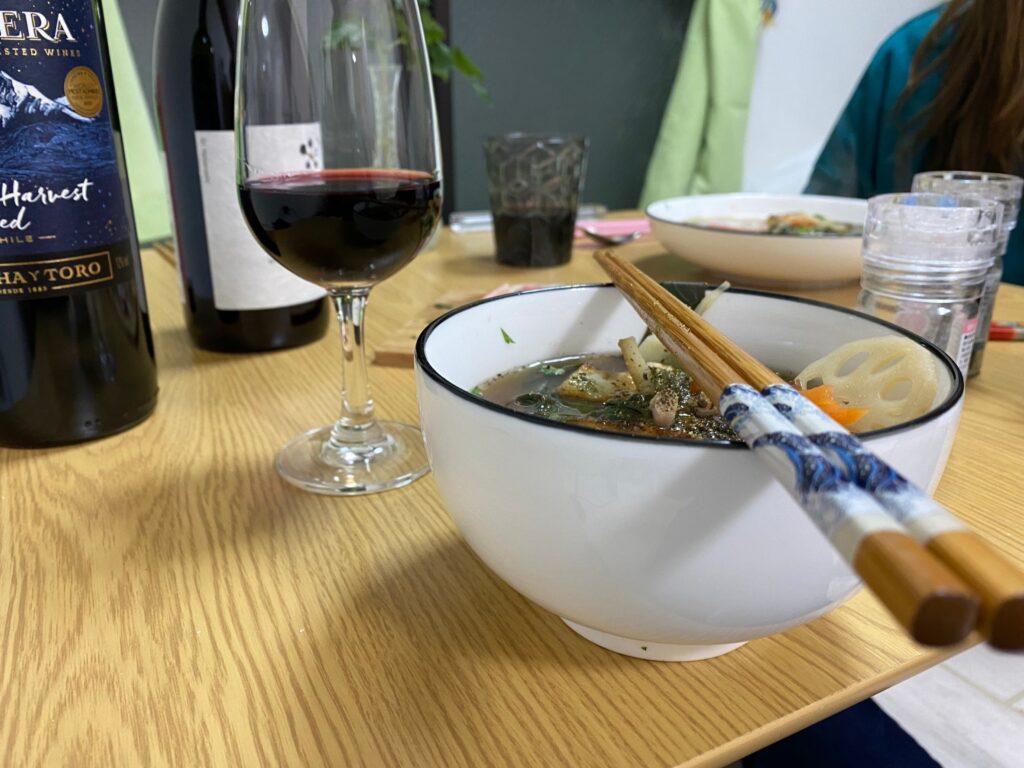This article originally appeared in the December 2022 issue of CONNECT.
Welcome the new year with a cozy bowl of Ozoni
Monica Hand (Ehime)
In Japan, the New Year’s dishes are an important part of the holidays. These foods, known as osechi, are thought to bring good fortune if consumed at the start of the year. Many times the osechi dishes are purchased in layered, bento-like boxes called jubako featuring a wide variety of small tastes. Though these ready-made selections of osechi dishes are a favorite, there are many other delicious ways to welcome the New Year in Japanese households. One such traditional meal for good fortune is ozoni (お雑煮).

Ozoni is not a dish usually found on a restaurant menu or in a ready-made section. Rather it is one made among the family on New Year’s Day when the weather is chilly and just about everywhere is closed. The soup originated as an easy recipe using leftover mochi from the New Year’s offerings. In fact, the simplest version of the dish is just mochi in hot water. However, now the mochi is typically in a thin stock with vegetables, chicken, and kamaboko (fish cake).
Of course, like many things in Japan, every region and subregion tends to have their own twist and variation on the stock base and the ingredients themselves. The most popular of these variations would be the Kanto style—a white miso and dashi base—and the Kansai style—a soy sauce base and the addition of tofu. While it may be a bit overwhelming with all of the options, ask those in your local community if there are any regional twists you could add into your own pot.
This recipe comes from my co-worker in Ehime. She called it a mixed bag in terms of the variations due to her family’s history and preferences. Either way, my friends and I found it cozy and delicious and we hope you do, too.
Quick and Easy Ozoni Recipe
The Soup
- 3 cups of katsuo dashi
- 3-4 chicken thighs
- 2-3 stalks of komatsuna
- 4-6 kirimochi (depending on number of people)
- 1 medium carrot
- ½ medium daikon
- Soy sauce
- Sake
- Sliced kamaboko
(You can easily make the dashi at home but you can also make your life easier by opting for a ready-to-go dashi bought from the store. Chef’s choice.)
The Toppings
- Yuzu zest
- 1 mitsuba bunch
(For a vegetarian-friendly version, just swap out the katsuo-based dashi with a kombu-based dashi, the chicken thighs with tofu, and remove the kamaboko.)
Preparing the Ingredients
- Cut the chicken into bite-size pieces. Remove the fat if you’d like.
- Cut the daikon into half moons: Cut the root in half lengthwise and then slice the two halves to desired thickness.
- Shred the carrots. Alternatively, flat circle cuts work just as well. Many people also cut the carrots into plum flower blossoms as a tribute to the season.
- Trim the stems off the komatsuna and cut into smaller pieces.
- Toast the kirimochi in a toaster oven until golden brown (about 5 minutes).
- Roughly chop the mitsuba leaves.

Making the Soup
- Place the dashi in a large pot and bring to a boil then lower to medium-high heat.
- Add the chicken thighs.
- Once the chicken has begun to turn a pale color, add in the carrots and daikon to the pot. Cover and let cook until vegetables are tender and chicken is cooked through.
- Taste the soup and add soy sauce as you’d like. Optionally, add in a splash of cooking sake.
- Once all is cooked, add the komatsuna. Stir to incorporate.
- Remove from heat. Add the toasted mochi and fish cakes to warm them up.
- Then transfer to bowls. Be sure each bowl has a little of everything!
- Sprinkle with the yuzu zest and mitsuba.
Enjoy!

Monica is a second-year ALT based in Uwajima, Ehime and Head Editor of CONNECT. You can find more from her on her website or Instagram—both of which she is awful at updating. She loves rocky shores, spooky themes, and popcorn.



![CONNECT ART ISSUE 2024 SUBMISSIONS [CLOSED]](http://connect.ajet.net/wp-content/uploads/2024/04/ARTISSUE-INSTA-600x500.png)





